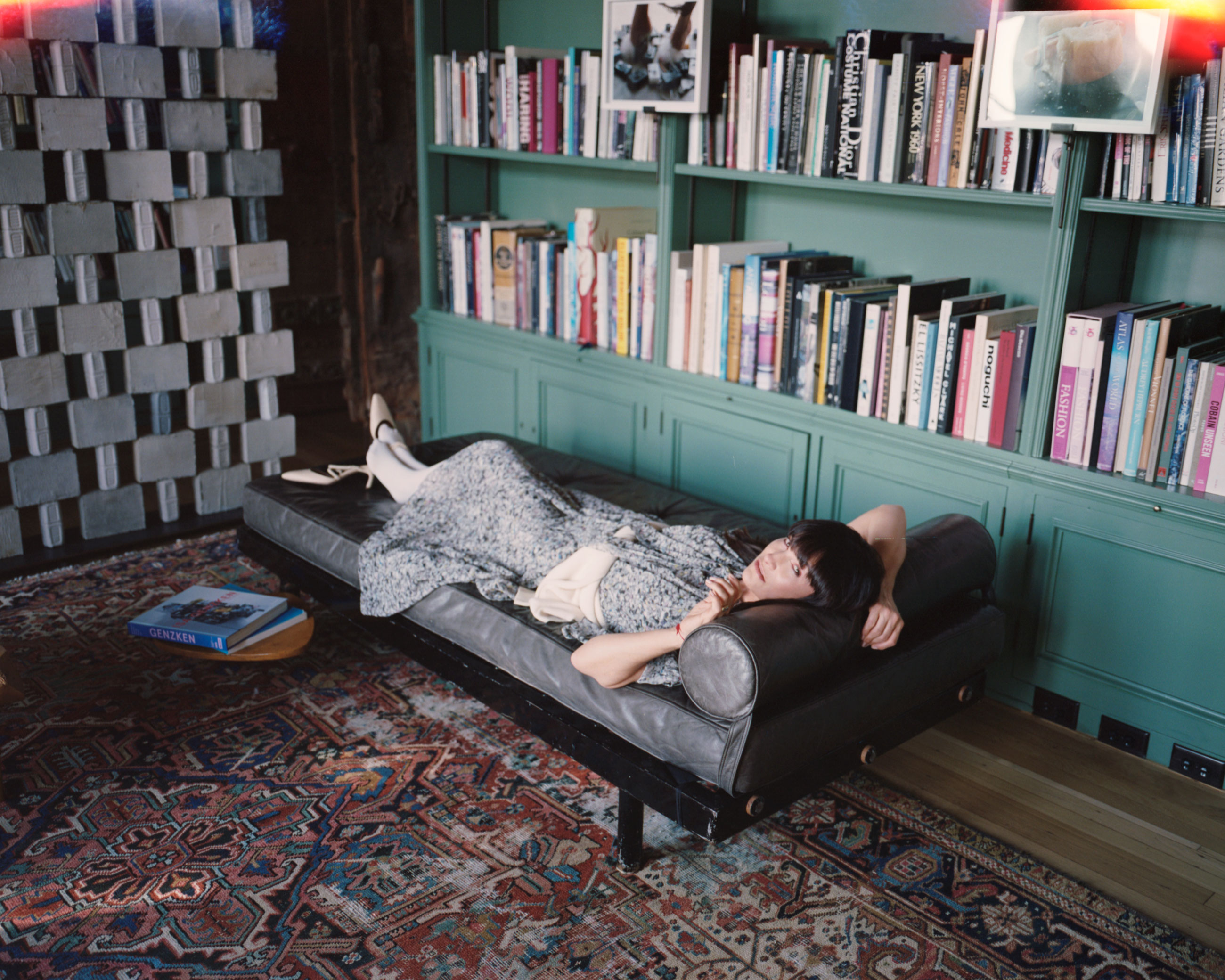
One of the guiding principles of Rosetta Getty’s eponymous label is day-to-night versatility. Meeting at her Los Angeles home underscores this: the 100-year-old-plus estate, dotted with orange trees, sits just above what by night becomes the pulsing Sunset Strip. In the dining room, vines from outdoors crawl across the ceiling; on the library’s jade-colored built-in bookshelves, books on Halston are nestled between works by Aldous Huxley. But, most notably, Getty’s home is set up like an art gallery, with large-scale pieces by emerging artists like Olympia Scarry and Rosha Yaghmai as well as Hayden Dunham, who collaborated on the label’s Resort 2019 collection. Dunham is just one of several young artists to work with Getty (most recently, artist Anna Ostoya inspired Pre-Fall 2019) in a kind of partnership that has become the brand’s calling card. “Artist collaborations in fashion have been going on since the beginning,” Getty tells me. “We took it to another level and inspired people to think about working with artists differently.” In the past two years Getty has also worked with the artists Alicja Kwade and Analia Saban.
Describing the clothes Getty designs requires a vocabulary similar to the one used when describing a piece of art. The unabashedly cerebral collections meld complex construction with subtle comments on femininity: she pulled some pieces for our photo shoot that included a satiny taupe jumpsuit, a bucket-hat visor and some crisp asymmetrical blouses.
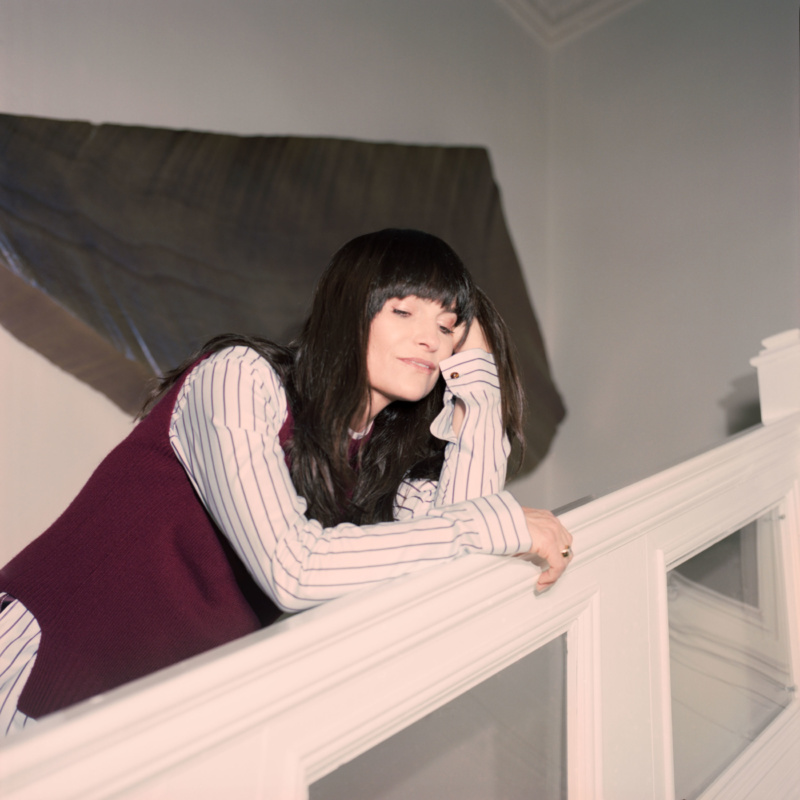
Getty began collecting art as a teenager, while working as a model. Her first acquisition was a Robert Motherwell bought at an auction. She started her label in 2015, and every season of her line has dealt with contemporary art or art history. Resort 2015 ambitiously riffed on the artists of pioneering gallerist Betty Parsons; references in subsequent seasons include Carol Bove, Christo and Jeanne-Claude and Louise Bourgeois. Getty has recently collected works by Juliana Huxtable and Amalia Ulman; with the latter, the relationship of designer and artist led to a unique exchange. After Ulman wore archival Rosetta Getty in an Instagram performance, Getty bought the resulting piece for her home in New York. (“We should give her more clothes,” Getty muses offhandedly.)
The more recent Dunham collaboration “started with this fascination with Home Depot and using things from the hardware store to create beautiful pieces from basic utility items,” explains Getty. One such result is a textile pattern based on the underside of a carpet pad. Dunham also created an installation for the brand’s New York showroom, as have several other collaborating artists.
Saban remembers being worried at first about what the process for Fall 2018 would look like. “There was a moment in our collaboration when I wanted to propose staining her pristine clothes, including a beautiful cashmere sweater, with a drop of paint that resembled a stain of wine or coffee. I was very nervous because I still didn’t know her sense of humor,” she recalls of Getty. “But once I showed it to her she loved it.”
Currently, Getty is trying to find a semi-permanent place to exhibit the various showroom installations. On her decision to collaborate primarily with women artists, Getty says: “Right now I really feel like it’s important to promote women—especially in this field, because it’s not been easy. Women haven’t had the same opportunities available to them as men, so as a woman I think it’s the right thing to do.”

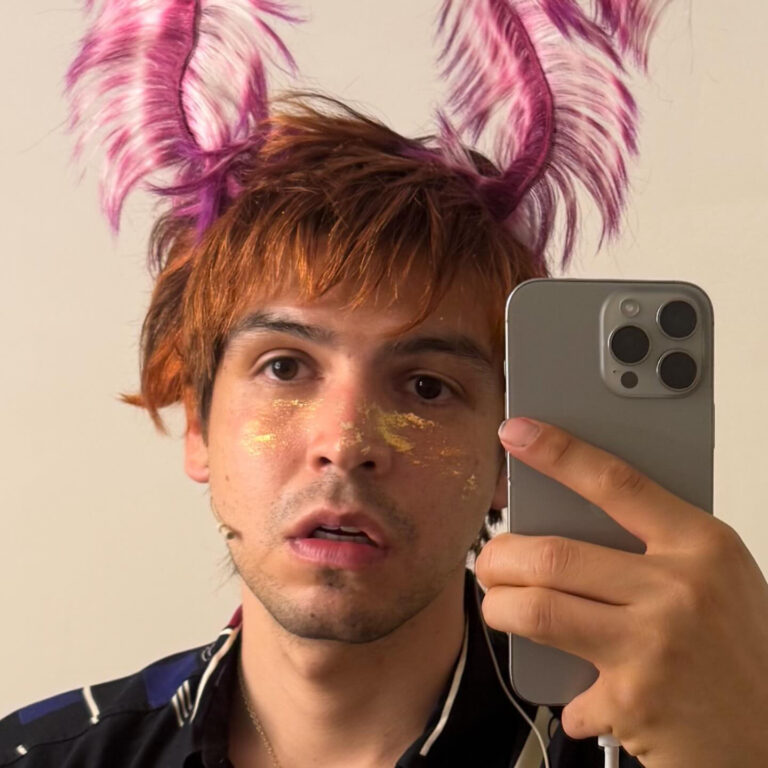
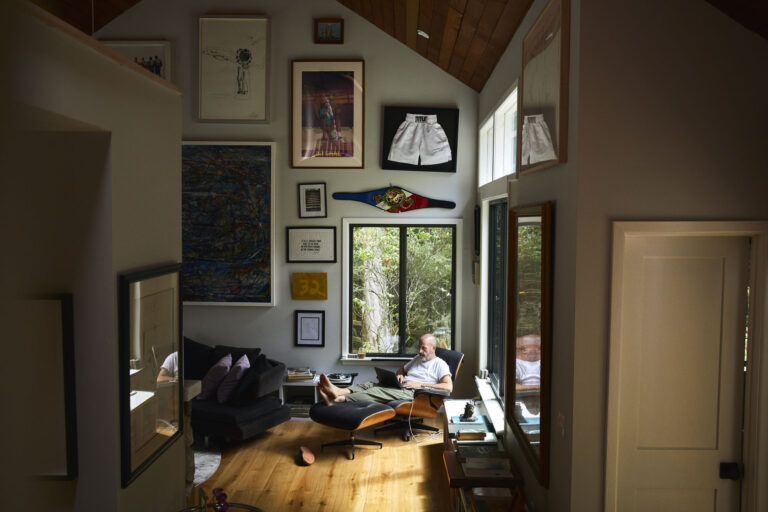
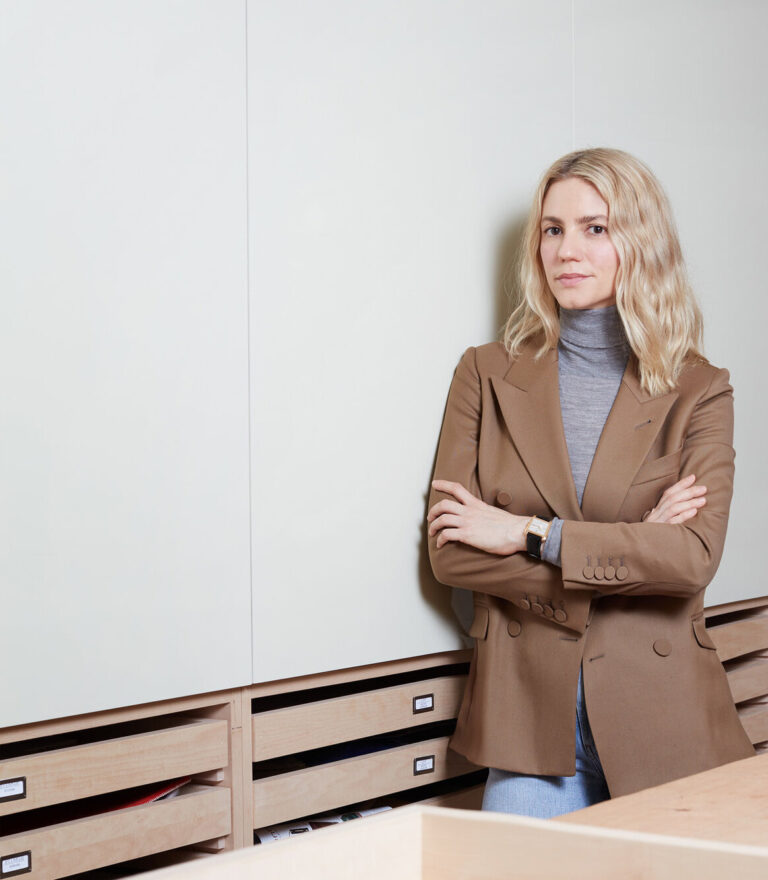

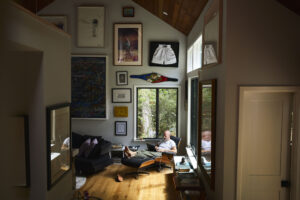
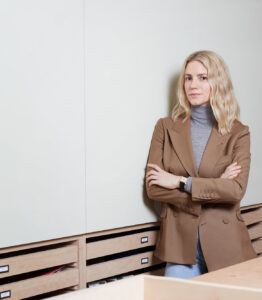



 in your life?
in your life?

